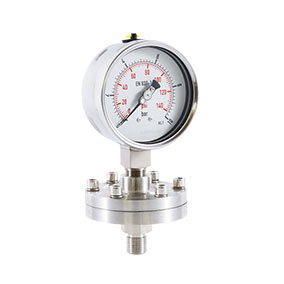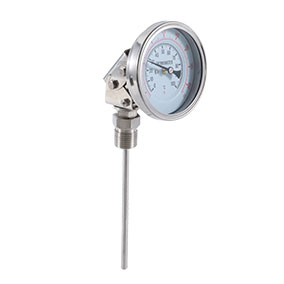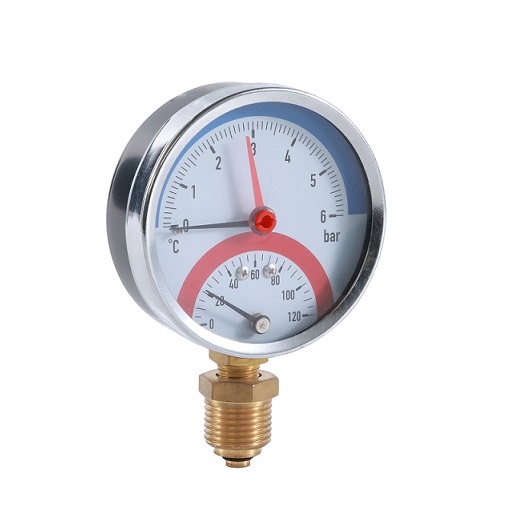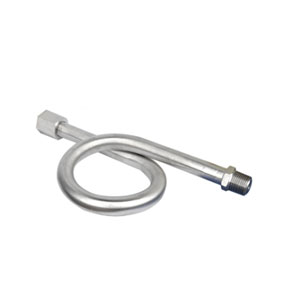The Ultimate Guide to Differential Pressure Gauges: Unlocking Efficiency in Industrial Applications
Differential pressure gauges play a critical role in monitoring and controlling processes across diverse industries. This comprehensive guide provides a comprehensive overview of differential pressure gauges, their applications, benefits, and best practices. Whether you’re a novice or an experienced engineer, this guide will equip you with the knowledge to optimize your system performance and ensure accuracy and reliability.
What is a Differential Pressure Gauge?
A differential pressure gauge measures the difference in pressure between two points. It converts the pressure differential into a mechanical or electronic signal that can be displayed or used for control purposes. Differential pressure gauges are commonly employed in applications where precise measurement of pressure differences is essential, such as flow measurement, liquid level monitoring, and filter monitoring.
Types of Differential Pressure Gauges
Differential pressure gauges are categorized based on their design and operating principle. The most common types include:
* Mechanical Diaphragm Gauges:</strong> Utilize a diaphragm that deflects in response to pressure differences, driving a mechanical pointer.
* Electronic Differential Pressure Transducers:</strong> Convert differential pressure into an electrical signal using a sensing element such as a strain gauge.
* Piezoresistive Differential Pressure Transmitters:</strong> Employ a diaphragm with embedded piezoresistive sensors that detect pressure differences and generate electrical signals.
Benefits of Using Differential Pressure Gauges
Differential pressure gauges offer numerous advantages for industrial applications, including:
* Accuracy and Precision: Provide highly accurate measurements of pressure differences.
* Reliability and Durability: Designed to withstand harsh operating conditions, ensuring long-term reliability.
* Versatility: Can measure a wide range of differential pressures and fluids.
* Compact Size and Lightweight: Ideal for space-constrained applications.
* Low Maintenance: Requires minimal maintenance, reducing downtime and maintenance costs.
* Enhanced Process Control: Enables precise control of processes by providing real-time feedback on pressure differences.
* Optimization of Energy Efficiency: Identifies areas of pressure loss, allowing for system optimization and reduced energy consumption.
* Improved Safety: Detects pressure surges or drops, ensuring safe operation and preventing accidents.
Applications of Differential Pressure Gauges
Differential pressure gauges find applications in various industries, including:
* Flow Measurement: Measuring the flow rate of liquids or gases using the principle of Bernoulli’s equation.
* Liquid Level Monitoring: Determining the level of liquids in storage tanks, boilers, and piping systems.
* Filter Monitoring: Detecting pressure drops across filters, indicating the need for cleaning or replacement.
* Leak Detection: Identifying leaks in pipelines, pressure vessels, and other systems.
* HVAC Systems: Optimizing air pressure distribution and monitoring filter performance.
* Medical Equipment: Measuring blood pressure, respiratory pressure, and flow rates in medical devices.
Selection Criteria for Differential Pressure Gauges
Choosing the right differential pressure gauge requires careful consideration of several factors:
* Measurement Range: Select a gauge that covers the expected pressure difference range of the application.
* Accuracy and Precision: Determine the required accuracy and precision level for the specific application.
* Fluid Compatibility: Ensure the gauge is compatible with the fluid being measured to avoid chemical reactions or damage.
* Environmental Conditions: Consider the operating conditions, including temperature, humidity, and vibration levels.
* Output Signal: Choose a gauge that provides the desired output signal for compatibility with control systems or displays.
Installation and Calibration of Differential Pressure Gauges
Proper installation and calibration are crucial for accurate and reliable performance of differential pressure gauges. Follow these guidelines:
* Correct Mounting: Mount the gauge in a suitable location with proper orientation to prevent errors.
* Piping Connections: Use appropriate piping connections and ensure proper sealing to avoid leaks.
* Calibration: Perform calibration by comparing the gauge readings against a known reference standard.
* Regular Maintenance: Regularly inspect and maintain the gauge to ensure optimal performance and prevent failures.
Advanced Features of Differential Pressure Gauges</h2>
Modern differential pressure gauges offer advanced features to enhance their functionality and usability:
* Digital Display: Provides clear and precise readings with easy-to-read numbers.
* Data Logging: Records pressure data over time for analysis and monitoring trends.
* Alarm Functions: Alerts operators to abnormal pressure conditions, preventing potential problems.
* Wireless Communication: Enables remote monitoring and data transmission for enhanced flexibility.
* Self-Diagnostic Capabilities: Detects and reports internal errors, simplifying troubleshooting.
Success Stories of Differential Pressure Gauges
Differential pressure gauges have played a pivotal role in various industrial success stories:
* Energy Savings in Manufacturing: A manufacturing plant installed differential pressure gauges on its compressed air system. The data revealed areas of excessive pressure loss, leading to optimization measures that reduced energy consumption by 15%.
* Improved Patient Safety: A hospital upgraded its respiratory equipment with differential pressure gauges to monitor patient airflow. The precise measurements enabled early detection of airway obstructions, improving patient outcomes.
* Optimization of Water Distribution: A water utility implemented differential pressure gauges to monitor pressure differences in its distribution system. The data helped identify leaks, reduce water loss, and improve overall efficiency.
Expert Tips for Using Differential Pressure Gauges
* Select the appropriate gauge type for the specific application to ensure accuracy and reliability.
* Install the gauge correctly and perform regular calibration to maintain optimal performance.
* Monitor pressure readings regularly and respond promptly to any deviations from normal conditions.
* Use advanced features such as data logging and alarm functions to enhance monitoring and prevent downtime
For more information on whether pressure instrument or temperature instrument is right for your specific application, visit the Exactinstru official website!





